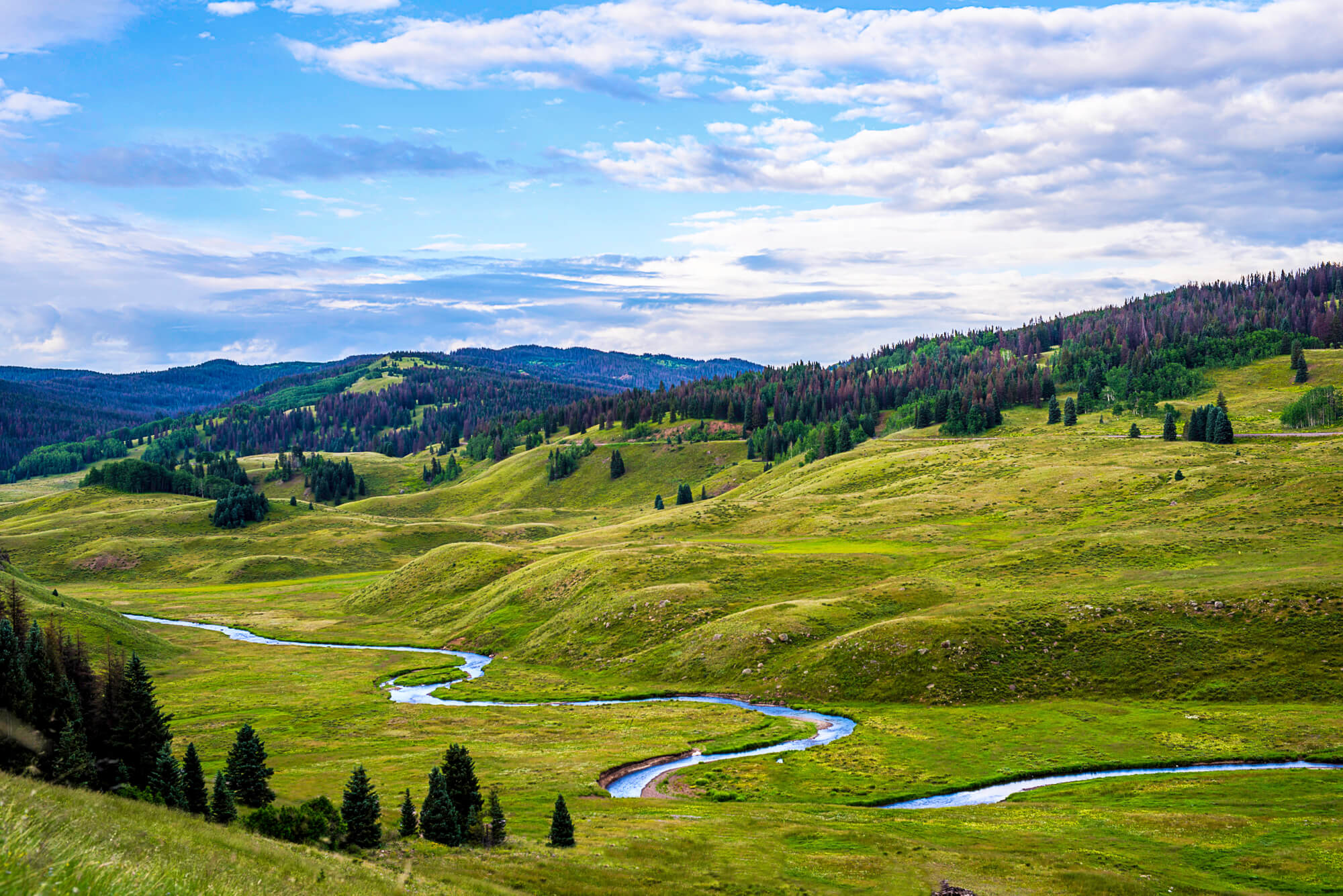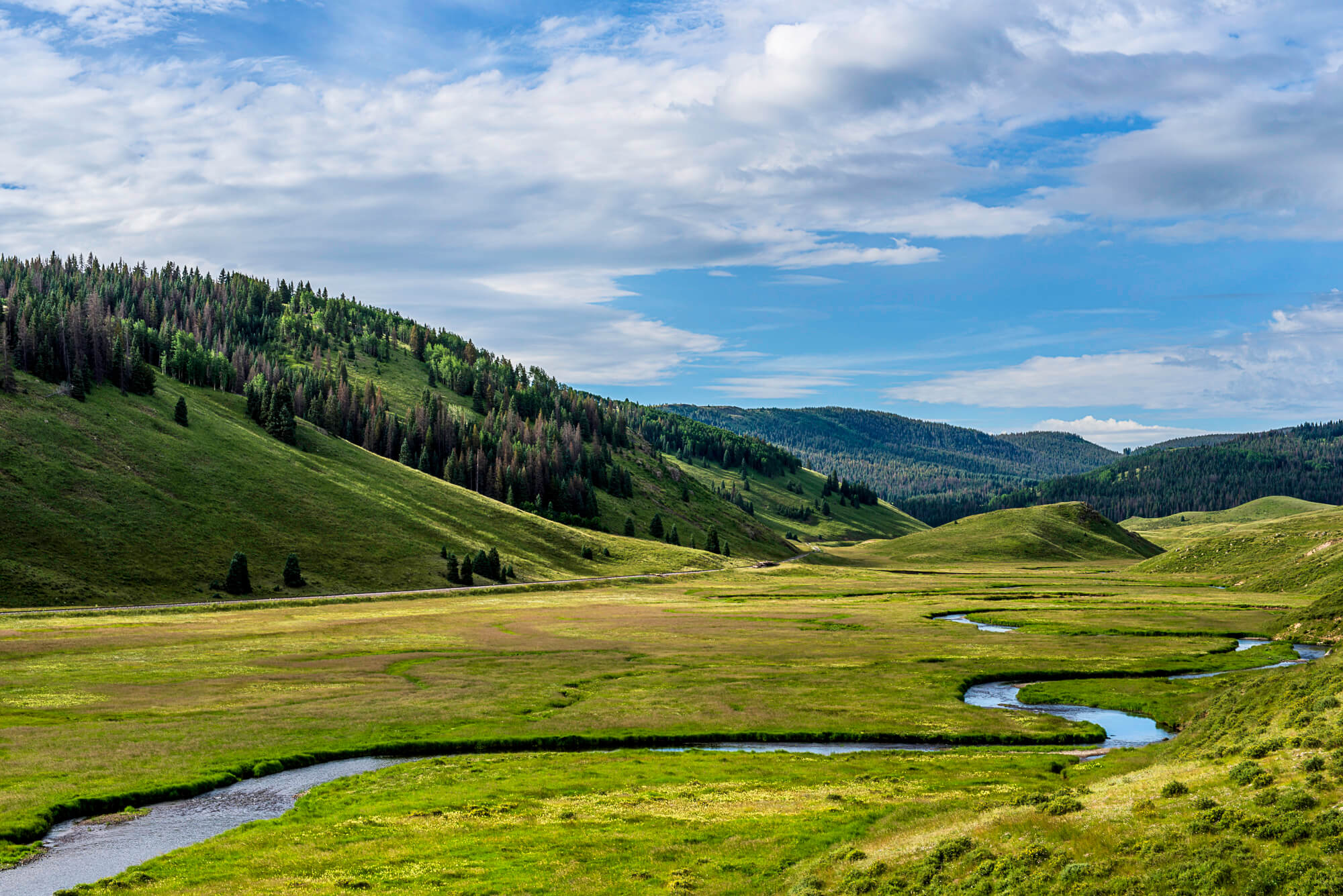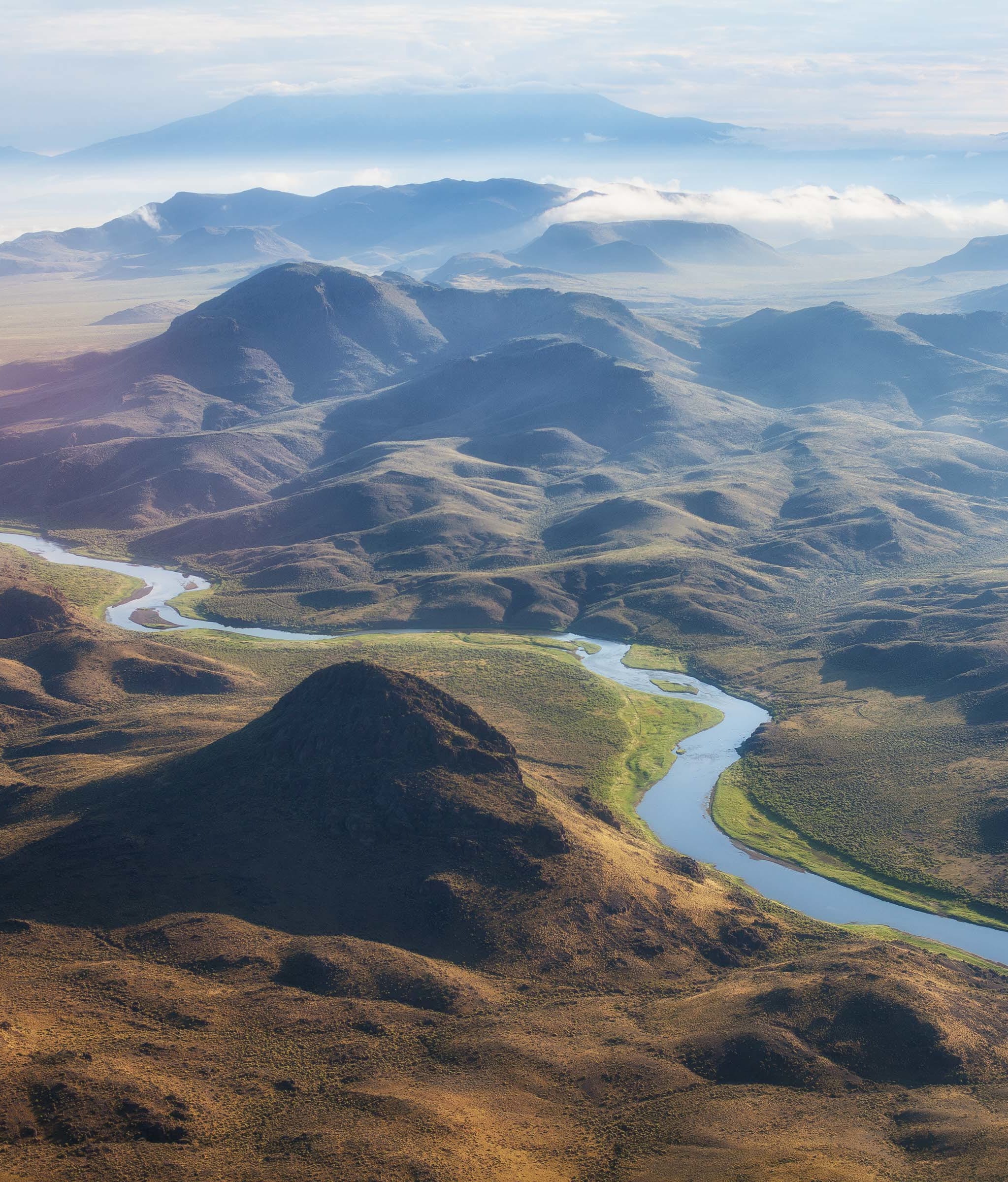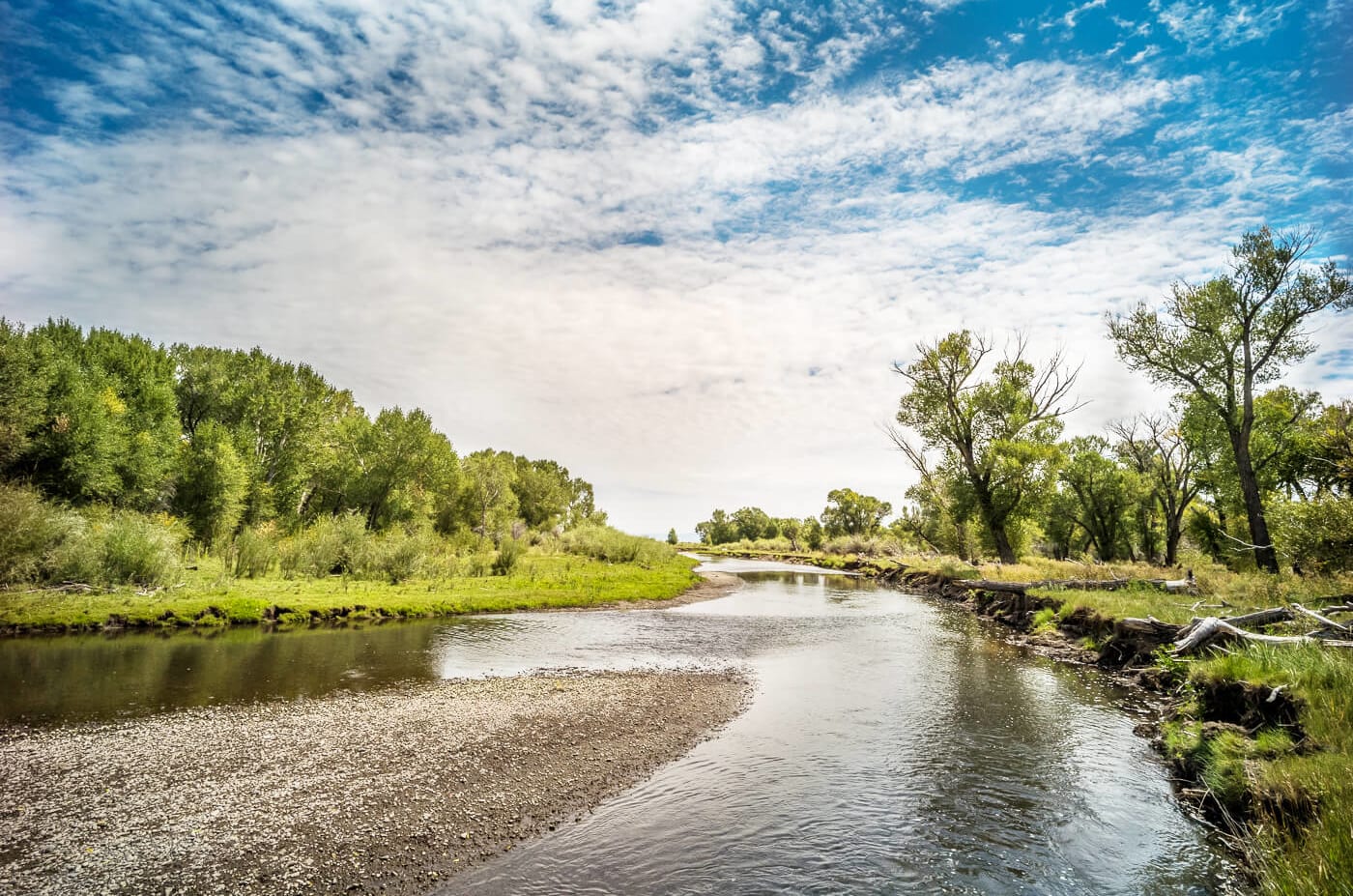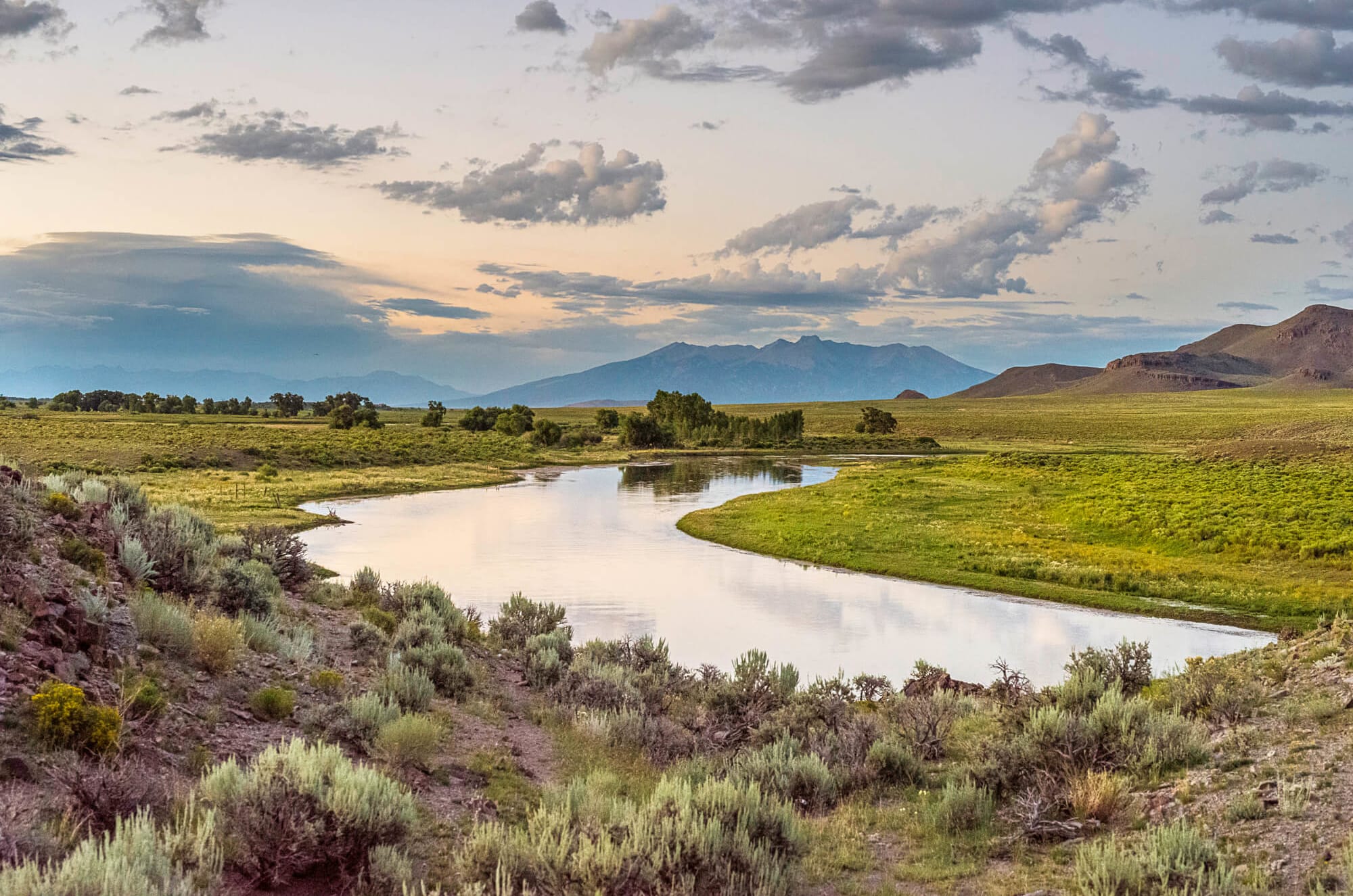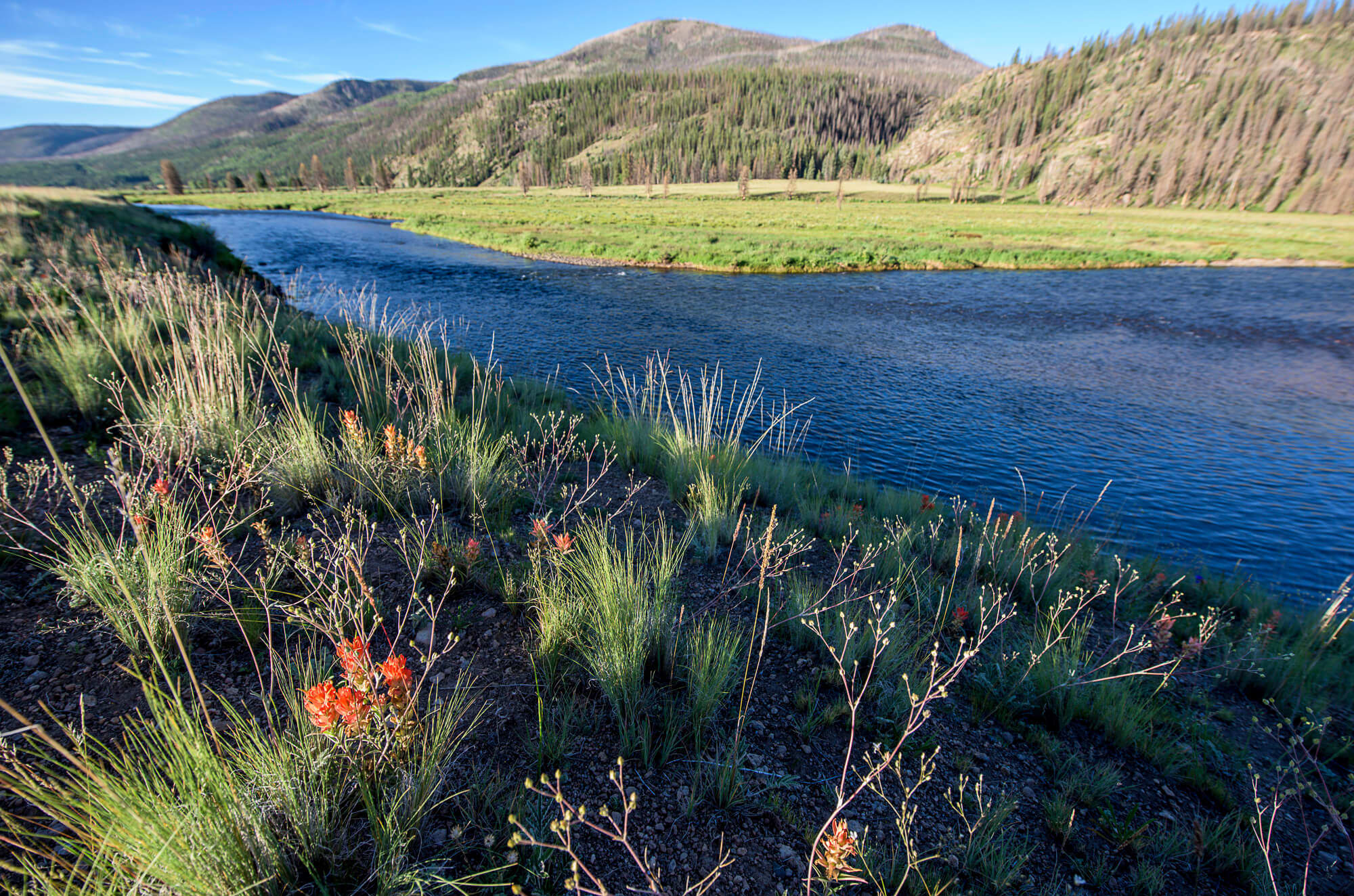Alpine scenery and outstanding trout habitat
Flowing from a series of pristine, alpine lakes near the Continental Divide, the Rio de Los Pinos tumbles several thousand feet on its 40-mile descent from high in the San Juan Mountains to its confluence with the Conejos River. Along its way, it crosses the Colorado-New Mexico Border twice before entering Colorado’s scenic San Luis Valley near Antonito. On Cumbres Pass, near the Colorado-New Mexico border, the Rio de Los Pinos pauses its rapid descent and slows to a gentle meander, winding through a valley of lush, open meadows nestled between forests of spruce and fir. Several times a day, a historic, narrow-gauge steam train chugs along the Cumbres & Toltec Scenic Railroad, passing the river and offering passengers picture-perfect views of this high-altitude valley.
In addition to being a beautiful alpine river, the Rio de Los Pinos is also an excellent little trout stream, though this is often overshadowed by the nearby Conejos and Chama Rivers in the minds of anglers. This is partially due to the fact that accessing the river’s most attractive fly water is a challenge along much of its length. That changed in the summer of 2017 when Western Rivers Conservancy acquired the first of two properties along the Rio de Los Pinos, just off Highway 17, near Cumbres Pass. WRC conveyed the land to Rio Grande National Forest, creating new access to a small slice of angling paradise and ensuring permanent protection of this important stretch of the Los Pinos River.
Conserving riverland, ensuring public access for all
Like many near-pristine slices of the West, portions of this valley have been subdivided for second home development. However, the majority of Rio de Los Pinos frontage remains undeveloped. WRC bought this land to preserve the remainder of the valley’s unbroken, natural beauty while ensuring that its tremendous recreational opportunities remain a public resource for all.
WRC purchased the initial 368-acre property from a family with deep, multi-generational ties to the San Luis Valley who wished to see their former summer pasture lands permanently preserved as open space. The family was able to do that by working with WRC, which ensures the lands are protected in perpetuity. Directly to the north of this property, WRC purchased a second, 260-acre parcel from the same family in 2018 and transferred it to the national forest. Together, the two holdings protect nearly 630 acres and more than a mile of the Rio de Los Pinos, including one of the most accessible reaches of the river. The properties include high-altitude wetlands and a natural pond, which host migratory waterfowl in the spring and fall. The land is also home to Rocky Mountain elk, black bear, mule deer and mountain lion.
While some anglers know the Rio de Los Pinos for its abundant nonnative brown and rainbow trout, the river also has excellent habitat for native Rio Grande cutthroat, which once thrived here. Several of the Rio de Los Pinos’ remote tributaries serve as refugia for populations of these native fish. Conservation efforts provide new hope that this endemic cold-water species may once again inhabit the Rio de Los Pinos itself. Our efforts will help ensure the river remains healthy, increasing the likelihood of success should these imperiled fish be reintroduced.
WRC’s Efforts in the San Luis Valley
WRC’s work on the Rio de Los Pinos is part of our larger effort to preserve habitat and connect people to the Rio Grande and its tributaries throughout the San Luis Valley. In 2015, we created the San Luis Valley Conservation Fund in partnership with the LOR Foundation and our local partners Rio Grande Headwaters Land Trust and Colorado Open Lands. The Fund is a collaborative effort to bolster local conservation efforts and to preserve the region’s rich cultural heritage, all while enhancing livability for valley communities. The fund includes a $2-million re-granting program called the San Luis Valley Conservation and Connection Initiative, which supports local conservation organizations and ensures healthy futures for the culture and communities that the Rio Grande has sustained for generations.
As part of this effort, Western Rivers Conservancy created the 17,019-acre San Luis Hills State Wildlife Area, directly across the Rio Grande from the Olguin Ranch, another property we conserved. At Olguin Ranch, WRC also donated a conservation easement to the U.S. Fish and Wildlife Service, dropping the final piece into place in the effort to create the country’s newest unit of the National Wildlife Refuge system: the San Luis Valley Conservation Area. North of our Rio de Los Pinos projects, we conserved a small but important property near the old Freemon General Store, on the main-stem Rio Grande. At the heart of the valley, near the city of Alamosa, we created the Alamosa Riparian Park to protect an additional mile of the Rio Grande and connect the community of Alamosa to its backyard river.
Funding for the Los Pinos Project was made possible through generous contributions from multiple sources, including the LOR Foundation, the San Luis Valley Conservation Fund, the Jacob and Terese Hershey Foundation, The Conservation Alliance and with the generous support of many additional individuals, foundations and businesses.


